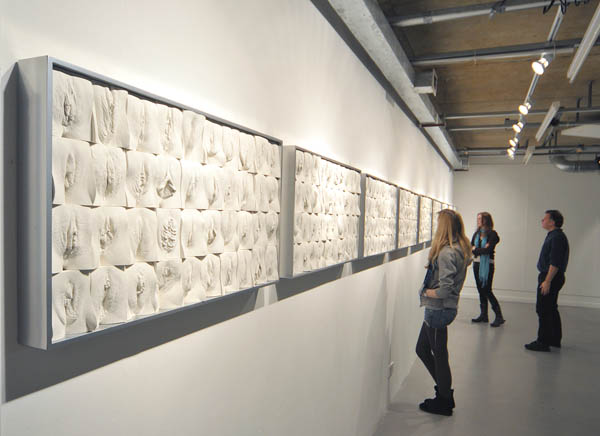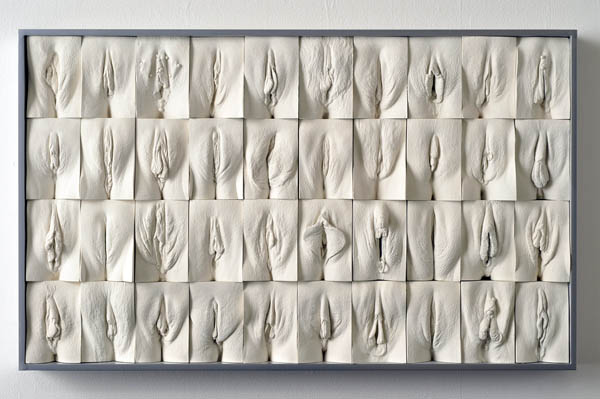If you think books are only for reading, well, think again!! Boston-Based Designer Ryann Ovelline’s new dress is entirely made of recycled pages from stories,specifically stories that were used to make us sleep when we were kids. Yes ! Children books. Although it’s not something you would want to wear, but in case you did, you will attract a lot of toddlers and kids.
Category Archives: Uncategorized
The Hobo Lantern by molo design
Would you want your bag to light up when you hang it? Well, now it can thanks to Molo Design and their Hobo Bag collection. The bag comes with an energy efficient LED light that glows through the translucent fiber. The bag retails for $ 100 at molostore.
Tree Tape
The tree tape was created by London-based designer Nitipak Samsen to measure how much CO2 a tree absorbs from the air and comparing the findings with real life activities such as car emission, air plane etc…
The Wyckoff Exchange
project: The Wyckoff Exchange
Architect: Andre Kikoski Architect
Andre Kikoski Architect’s design approach in the this project, as in all of its work, is aimed at creating a dynamic, fluid piece of architecture. As an expression of AKA’s trademark resourcefulness and lyricism, and as an innovative approach to recycling buildings and creating a destination environment with an extreme economy of means, Wyckoff Exchange is truly a welcome development in this quickly evolving neighborhood.
“We wanted to create an iconic building to speak to Bushwick’s up-and-coming status as a center of art and creative energy,” says Kikoski, “so we devised a unique aesthetic that’s dramatic, inventive, and inspired by the neighborhood’s industrial past. With state-of-the-art technologies and construction techniques, we were able to realize this 100-foot-long, eighteen-foot-tall façade in only two inches of depth.” [Dezeen]
Photographs are by ESTO/Francis Dzikowski.
Jugaad- Public Art Installation, India
“What happens when a thousand oil cans decide to fly?
Jugaad explored this idea through a celebratory and constantly evolving process of re-purposing and redefining the cooking oil can, a ubiquitous feature of Indian life. The project borrows its namefrom a hindi term which refers to attaining any objective with the available resources at hand. Bycombining this attitude with an open-source, inclusive process, the project took recycling and reuse beyond a simple utilitarian measure into an exciting adventure of defiance and collective will. This journey is the result of a unique engagement with the residents of Rajokri, an urban village on the outskirts of New Delhi in India. Over a period of three months, Sanjeev Shankar used the discarded oil can as a vehicle to explore ideas of sustainability, recycling and re-purposing with 90 other residents from the village. Using grass root ingenuity, Jugaad reincarnated 945 such cans into an incredible free-standing shade canopy spread over 70 square metres. This story celebrates the practice of jugaad and the collective spirit of India and its people.”
STEVEN KLEIN
“Portraiture in the past has been regarded as a documentation of a person but for me it is a documentation of the encounter between myself and the subject. It is not meant to reveal them, nor is it meant to subject them to an X-ray; it is a departure from that. I am more interested in the alchemical reaction that occurs when elements are brought together in a space.
Not so much a collaboration between photographer and subject, more a scientific experiment – the studio becomes a lab. For me the portrait is not psychological either. It is atomic. Atoms change their electrical charge continuously, and the more challenging the shoot, the greater the chance of this charge. Yes, I do begin with an idea, a series of ideas that link together logically. But logic is often superseded by events beyond my control.
Art starts as a means of control but the atoms that compose us can spin in a different direction. When you see Madonna in a series of these images, she is neither a perfected icon nor is she revealed instead she remains ambiguous. I feel the obsession with celebrities is for the most part based on a tired need to know oneself through the other, and perhaps the concept of knowing oneself is all deluded.
There is a desire to link photography with painting. My background is painting and I feel there is no connection between the two. It is as if the camera is linked to a sin, producing a bastard art form that we feel we must link to the past in order to give it credentials. I don’t want those credentials. I have no need to apologize for photography. My archives exist only for sound business reasons; otherwise my work would be disposable. And there lies the contradiction, for I am a private person not an exhibitionist, I am a person who lives for the future, not the past; I am standing behind a camera in order that I can extend myself in front of it. “
The Great Wall of Vagina
The artist Jamie McCartney started this project as an experiment.He wanted to show people that every one is unique in his creation even vaginas are different. 9 panels each with 40 vaginas stand next to each other to form the Great Vagina Wall. Looking closer we can see the differences between each vagina, each one belongs to a different women, each one has an age and a uniqueness.
Is there a perfect vagina? The exhibition poses this question and nagates it at the same time. You can never ask such a question because after closer look at the vaginas you notice that each once has its own perfection in some way. How can you compare between relatively different “things”. To some extent it makes women feel more comfortable about their own vagina. It is no longer a taboo to take a closer look at your own organ.
UP!!
I loved the movie. I was dazzled by the idea of making a house fly by attaching balloons to it and now, thanks to National Geographic, the fantasy became reality.
They actually managed to make a house rise into air by attaching helium balloons to it. In case you are not familiar with the movie here’s a link: http://www.pixar.com/featurefilms/up/
James Nachtwey

 Let the photos speak of greatness…
Let the photos speak of greatness…
“I have been a witness, and these pictures are my testimony. The events I have recorded should not be forgotten and must not be repeated.” – James Nachtwey
Lift by Apollo Architects & Associates
The house is in Sendai Japan, i am not sure if it still exists after the tsunami that struck the country yesterday.Watch the news, you might see it floating on water.
What attracted me in this design is the boldness of the architecture in both form and color. It stands as a huge volume on top of a rather shy lot. You can distinguish the design immediately from the so-called traditional norms of designing houses. It looks like an isolation box, the kind u imagine a prisoner living in.
The upper floor attacks protrudes towards the street. You get a hint of the interior from the slanted plane, but that’s the only thing you are allowed to see. The sides are all black offering very small openings. The architect created a courtyard inside the building to give a private outdoor space for the family, and at the same time allow light to go in without hindering the privacy of the household. It is black, it is un-welcoming and you are not allowed to take a peak on what is going on inside.
The interior,however, contrasts with the exterior. It is all white and bright, there is a transparency between the different spaces that does not show from the outside. This black box is a surprise box for a first time visitor who might be, at first, hesitant about entering into this dark volume but once he does the experience will be a total opposite.
In the End, our hearts go to all the people in Japan, hope you will come out of this experience stronger.







































